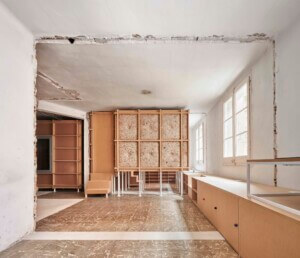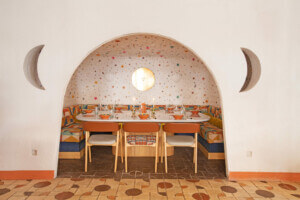Architect: Batlleiroig
Location: Barcelona, Spain
Completion Date: March, 2022
Catalan architecture, landscape, and planning firm Batlleiroig has realized the first blackened timber facade in Spain. Its design for the Entegra building marks the first use of the material on an exterior in the country. Located within Barcelona’s 22@ district, a product of urban renewal within the city’s Sant Martí neighborhood, and adjacent to the beachfront El Poblenou area, Entegra hosts 4,138 square meters (44,500 square feet) of office space.
22@, which was redeveloped to house Barcelona’s aspirational tech center, was part of Ildefons Cerdà’s well-known master plan for the city. Incorporating interior courtyards and chamfered block corners, Cerdà’s mid-19th century plan has been subject to a plethora of interventions over the years but retains its character in a large swath of the Spanish city. While the area around 22@ is home to a number of significant buildings from the early 2000s, including Jean Nouvel’s Torre Agbar and Herzog and de Meuron’s Forum Building, Entegra is smaller in scale, making it more sensitive to sustainability than many of its nearby predecessors.
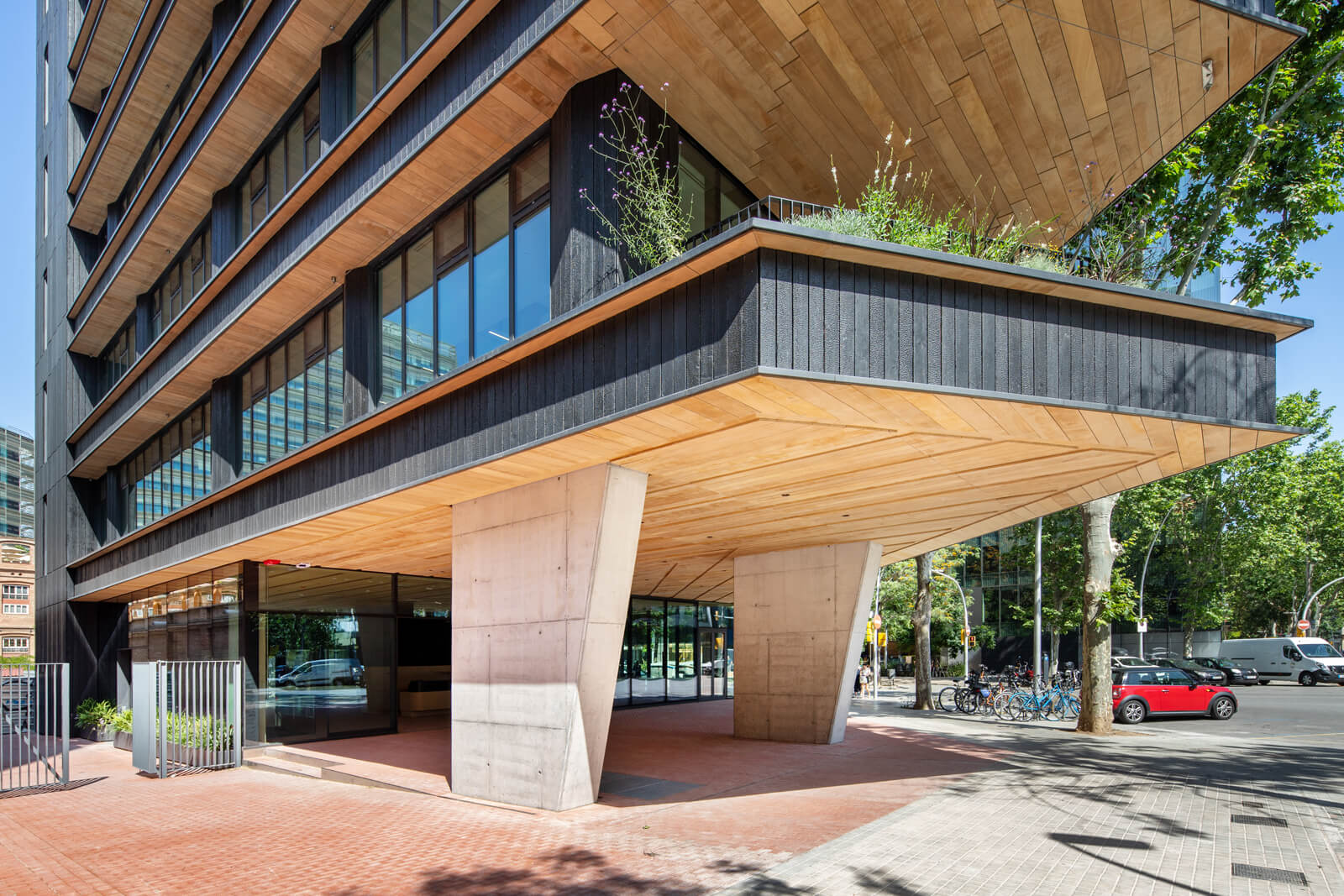
In 2008, Batlleiroig also designed the master plan for the surrounding area, including the lot that Entegra was constructed on. The building is marked at the street level by its concrete pillars, which were arranged into a trapezoid, visually marking it apart from other buildings. The publicly-accessible open ground floor connects with passages that allow access to the interior of the block.
Rising eight floors above the street level podium, Entegra aims “to ensure user well-being from the moment they set out on their journey to work,” Batlleiroig senior partner and CEO Albert Gil Margalef and senior project director José Sanz Gorordo told AN. Considering sustainability in a more holistic sense, the site includes cycling infrastructure, and the building itself is near zero energy. The floor plates are open-plan, with dividing walls for programmatic needs, and every level includes a balcony.
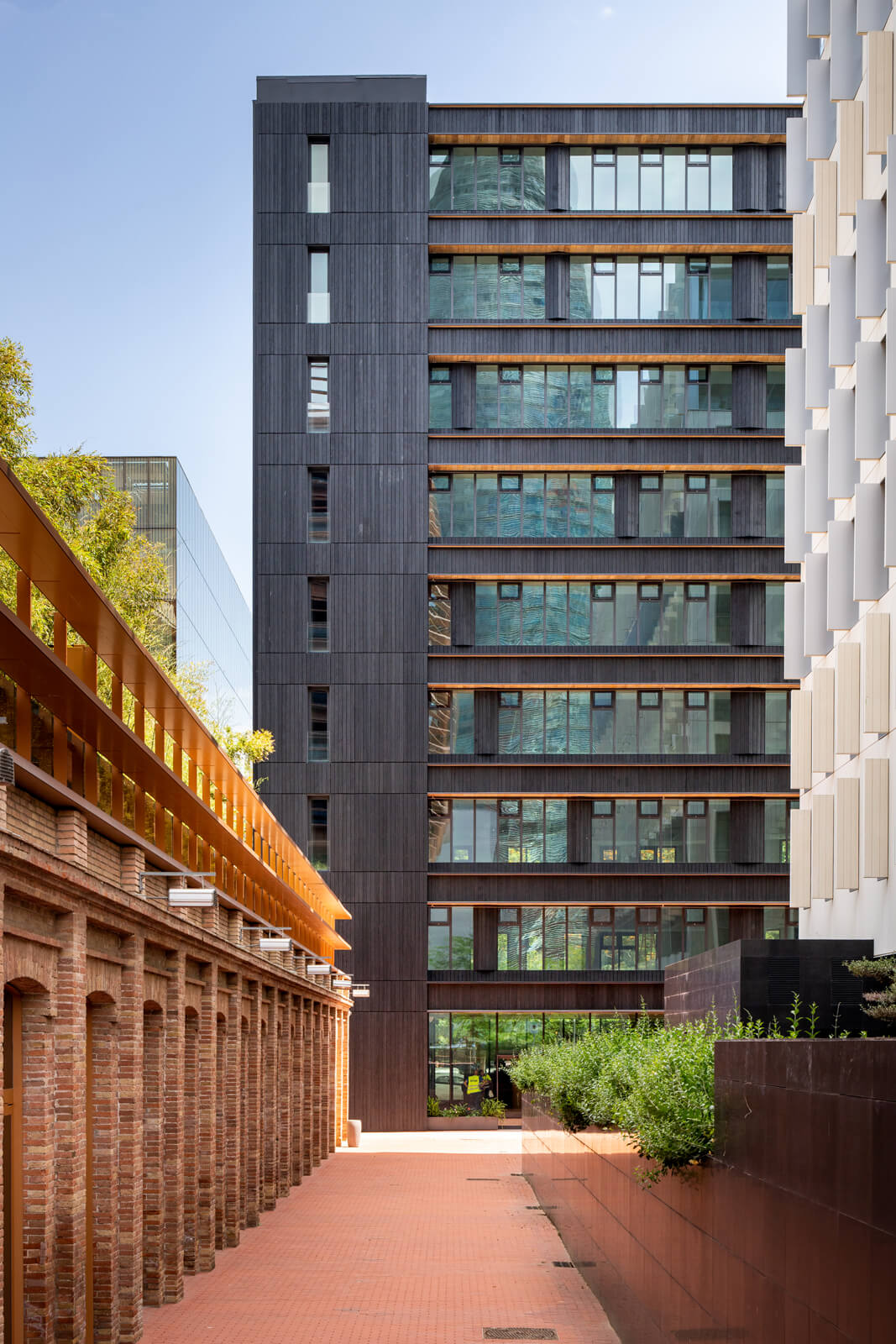
In order to achieve near-zero energy consumption, a number of facade strategies were carefully chosen for environmental performance. As Gil Margalef and Sanz Gorordo said, one of the firm’s main focuses is reducing carbon dioxide in its projects. To this end, the design team explored using timber for the building’s structure, but it proved too challenging given its geometry and the project budget, therefore, timber was moved to the facade cladding. Its outer layer is charred using the Shou Sugi Ban method, increasing the material’s protection from “dampness, insects, weathering, and fire,” the architects explained. Maintenance costs for charred wood are also lower, and given the material’s durability would lead to lower material consumption as the building’s cladding would not have to be replaced as often as other common building materials. Considering the building’s entire life cycle, once worn out, the wood will turn to ash, and can be used as fertilizer. Gil Margalef and Sanz Gorordo also emphasized the importance of choosing a natural material that would not consume additional material resources through a more extensive manufacturing process.

In addition to material choice, Entegra’s natural ventilation was key in its low energy consumption. Gil Margalef and Sanz Gorordo noted that many architects opt for “more efficient machines on consumption management systems,” but the design team at Batlleiroig pursued a passive strategy that required less equipment starting in early design phases. The terraces and larger facade geometry limit the amount of solar radiation that the facade receives, and the design team carefully modeled daylighting to limit the use of artificial lighting in office spaces as much as possible.
Studying solar exposure, radiation, and wind patterns against the orientation of the floor plan, the design team was able to optimize openings for natural ventilation. When weather allows, the building “can acclimatize naturally,” this system is crucial at nighttime when it takes advantage of what the architects call “free cooling.” They further emphasized that as these environmental strategies were part of the building’s design from its onset, the final form of the facade and structure were not “capricious,” but rather respond to needs in achieving near zero-energy consumption.
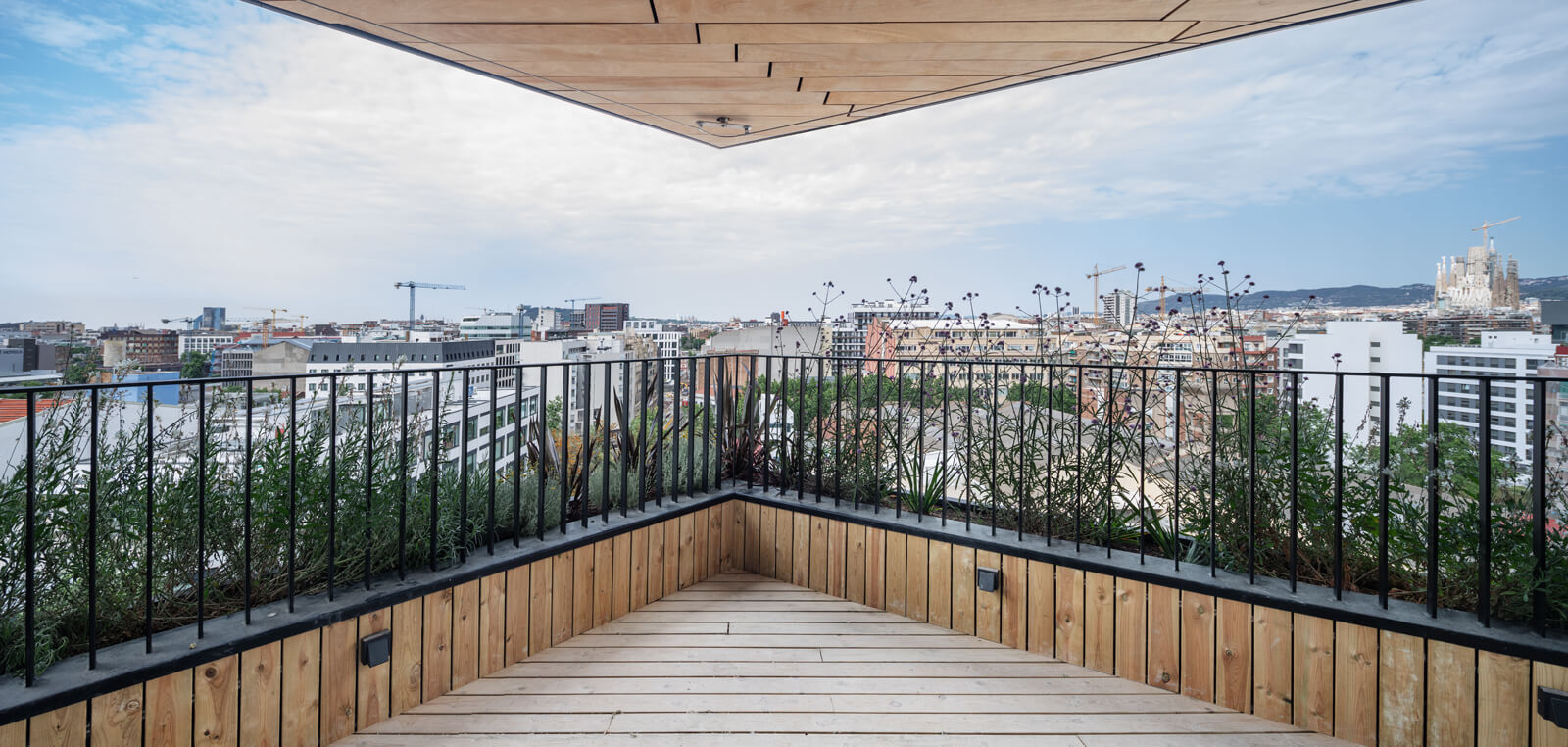
The construction process required careful work as the charred wood and natural ventilation system were largely unknown to other Spanish firms working on the project. Apart from the timber, the facade is a ventilated system, with inner-facing cladding finished with lightweight cement sheeting and an outer-facing system of galvanized steel. The charred timber panels were anchored to a support system concealed by the galvanized steel framework. Batlleiroig worked closely with Sebastià during schematic design, to research the benefits of the charring process, and with Mallarach during construction, tackling the installation of charred wood panels on a project as large as Entegra. Combined, Batleiroig’s design has resulted in a net primary energy consumption of 23.9 kilowatts per hour per cubic meter per year.
Project Specifications
- Architect: Batlleiroig
- Location: Barcelona, Spain
- Completion Date: March, 2022
- Client: Patrizia, Urban Input
- Structural Engineering: BIS Structures
- Facade Consultants: ENAR Envolventes Arquitectónicas
- Building Engineers: G3
- Construction: Obra Civil Profesional (OCP)
- Wood Studies: Sebastià
- Charred Wood Installation: Mallarach
- Ventilated Facade System: Acieroid








